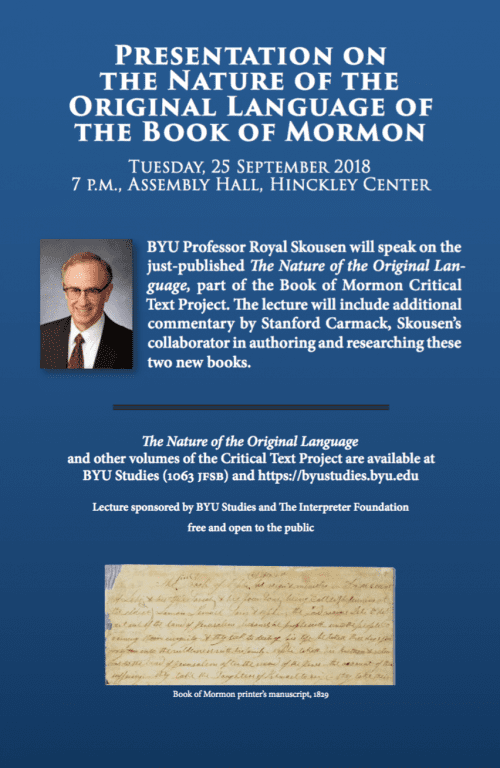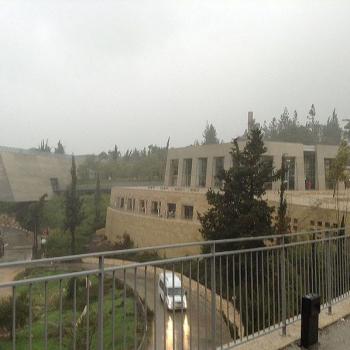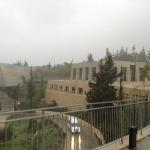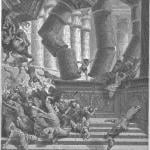
I will be introducing Royal Skousen in the Hinckley Center tomorrow (Tuesday) night, on the BYU campus, for the lecture that he will deliver, assisted by Stanford Carmack, on “The Nature of the Original Language of the Book of Mormon.”
Here’s the text of the introduction that I gave to his lecture in April 2017, when the second edition of his enormous six-part Analysis of Textual Variants appeared:
I’m honored to introduce to you my friend and colleague Royal Skousen.
But, although you’ve come tonight to listen to him, not to me, I think I need to do more than merely say his name and sit down.
I’ll get the routine, regular information out of the way first.
Royal Skousen received a doctorate in linguistics from the University of Illinois in 1972. Thereafter, until he joined the faculty of Brigham Young University in 1979, he taught at the University of Texas at Austin. He has also been a visiting professor at the University of California at San Diego and a Fulbright lecturer at the University of Tampere in Finland. In 2001, he served as a fellow of the Max Planck Institute in the Netherlands. He has published significantly and to an international audience on linguistic theory and quantum computing, including the volumes Analogical Modeling of Language (1989), Analogy and Structure (1992), and Analogical Modeling: An Exemplar-Based Approach to Language (2002). He has served on the editorial board of the Journal of Quantitative Linguistics—the official periodical of the International Quantitative Linguistics Association—since 2003. Frankly, I do not believe that BYU has adequately recognized the treasure that it has in him.
Now to the less routine:
Royal married the former Sirkku Härkönen of Finland in 1968, and I suspect—and I strongly suspect that he would agree—that he would not be what he is today without her support, assistance, and advice.
Nor would the results of his project have been presented even remotely so well had it not been for the remarkable gifts and efforts of Jonathan Saltzman, who deserves recognition for the indispensable contribution that he has made.
And tribute must be paid to remarkable donors—I’m not sure that it’s my place tonight to name them, and, for that matter, I may not know about all of them—without whose vision and generosity the Book of Mormon Critical Text Project would have been virtually impossible.
But now, finally, to the reason we’re here tonight.
We’ve joined here not because of his work in linguistic theory or his expertise on quantum computing, but because of his unparalleled achievement in the Book of Mormon Critical Text Project, which he launched back in 1988. Very nearly three decades ago. Three decades of intense, meticulous, and utterly honest labor. Work that I’ve described before as characterized by a uniquely fierce integrity and independence.
We’re here, specifically, to celebrate the appearance of the revised second edition of his massive six-part Analysis of Textual Variants of the Book of Mormon. We’ll hear not only about the differences between the first and second editions but about what this series means for the study of the Book of Mormon and how textual criticism of the Book of Mormon should be done—perhaps even, Royal has hinted, about how scholarly textual criticism should be done more generally.
The central task of the Project is and has always been, to the extent possible, to restore the original English text of the Book of Mormon by scholarly means. In the course of his twenty-nine years of careful scholarship, however, Royal Skousen’s efforts have spun off a number of notable results that go beyond even that goal.
In 2001, thirteen years into the Project, Royal began to publish the results of his research in multiple large volumes brought out by the Foundation for Ancient Research and Mormon Studies, or FARMS. This has led to a series of physically massive and aesthetically elegant volumes, including:
The Original Manuscript of the Book of Mormon: Typographical Facsimile of the Extant Text (2001)
The Printer’s Manuscript of the Book of Mormon: Typographical Facsimile of the Entire Text (in two parts, 2001)
Analysis of Textual Variants of the Book of Mormon (in six parts, 2004-2009)
The History of the Text of the Book of Mormon: Grammatical Variation (in two parts, 2016)
In 2009, Yale University Press published his edition of The Book of Mormon: The Earliest Text—a resource that, in my opinion, belongs in the home of every English-reading Latter-day Saint.
In 2015, the Book of Mormon Critical Text Project moved across campus from the Neal A. Maxwell Institute for Religious Scholarship, the organization that succeeded and, at least nominally, replaced the original FARMS, to BYU Studies. The Interpreter Foundation has been delighted and honored to be involved in the Project, as well. By my count, Professor Skousen has published eight articles in our journal, Interpreter, that derive from his Book of Mormon research, as well as a joint article with Dr. Stanford Carmack, who has himself published eight single-authored but closely relevant articles with us. All of them are freely accessible, at no charge. Since 2014, the original edition of Analysis of Textual Variants of the Book of Mormon has also been freely available on the Interpreter website—as is a video of the joint Skousen-Carmack lecture on “Editing Out the ‘Bad Grammar’ in the Book of Mormon,” given in April 2016, along with other related lecture-videos by Drs. Skousen and Carmack and others.
We’re pleased to be co-sponsors tonight, with BYU Studies and the Brigham Young University Department of Linguistics and English Language, of this lecture.
The Book of Mormon Critical Text Project has been a monumental undertaking.
What motivates the effort?
Royal Skousen’s work on the Book of Mormon text plainly grows out of his conviction that the book is worth the time and trouble. That it’s that important. This project is, in other words, an act of faith. An offering on the Lord’s altar.
Royal Skousen’s dedication to this project reflects his commitment to a proposition: The revelation that lies behind the Book of Mormon—or, I should say, the revelations, since the lengthy story of the Book’s origin, sealing up, and recovery involves a line of multiple prophets, ancient and modern—is so significant that it deserves to be gotten right. As right as we can humanly get it right.
To that end, Royal will not tolerate sloppiness or fudging or dishonesty or interference with the best relevant tools of rigorous scholarship.
It’s for that reason that his work will stand. It won’t need to be done again in just a few years. Unlike most past and current scholarship, which goes out of date almost as soon as it deserves to do so, the books that we’re celebrating tonight will retain their value for the foreseeable future.
I feel, in a very real way, that, in introducing him and, more importantly, being associated with him as a friend and colleague and supporter, I’m participating in an important chapter in the history of the Book of Mormon and in the history of the Restoration itself—for which the Book of Mormon is the signature text, from which we’ve even derived the nickname by which we and our church and our faith are most commonly known.
I’m not flattering him, and I’m not exaggerating, when I say that it’s a privilege to introduce Royal Skousen.
I hope to see you there Tuesday night.











